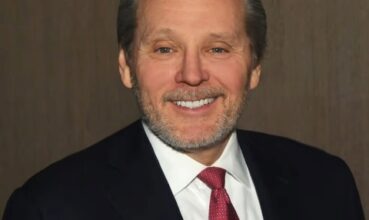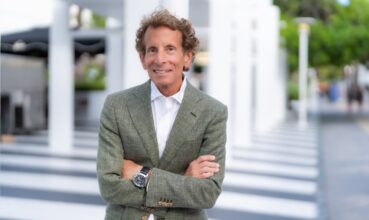

In New York City’s commercial real estate world, few names carry as much weight as Bob Knakal. Having personally brokered the sale of over 2,300 buildings valued at more than $22 billi...




“San Francisco appears have bounced off the bottom and is starting to come back,” says Brad Lagomarsino, Vice Chair of Multi-Family Investments at Colliers in San Francisco. After years of negative headlines and market uncertainty, the city’s multi-family sector is seeing renewed interest from institutional investors and family offices, marking what could be a significant turning point for the market.
With over three decades of experience and more than $5 billion in transaction volume across 16,000 units in San Francisco, Lagomarsino has weathered multiple market cycles. His assessment of the current recovery carries significant weight, particularly given the city’s unique challenges during the pandemic.
“We were in COVID lockdowns the longest of any city. Then, we acted like we were in lockdown much longer than the rest of the country, and San Francisco ended up with a ‘scarlet letter’ as a result,” Lagomarsino reflects. “Today, however, the city has shed that reputation. We’re seeing institutional capital and family offices begin to re-embrace San Francisco, now at a significant discount to where it once was.”
The numbers support this optimistic outlook. In 2024, the market showed significant improvement over 2023, with transaction volume increasing by approximately 69% and sales volume up 31%. For context, in 2023 only 38 buildings with 10+ units traded hands.
The recovery gained momentum in late 2023 and continued through 2024. “We saw the recovery start towards the end of 2024. That’s when I believe we bounced off the bottom, and the market started returning,” Lagomarsino notes. “We saw strengthening in rents, and tertiary areas also strengthened in terms of absorption of rental property.”
San Francisco’s multi-family market differs significantly from other major urban centers. Rather than new luxury developments, the city’s inventory primarily consists of older buildings dating back to the 1920s and 1930s, with some “newer” stock from the 1950s and 1960s.
“I sell neighborhood residential and multi-family buildings. These are, on the whole, older assets,” Lagomarsino explains. “These properties come with operational challenges – the cost of operations can be substantial.”
However, despite these challenges, opportunities exist for savvy investors. Cap rates are currently trading in the mid-fives, with particular interest in the city’s northern neighborhoods. Value-add opportunities are emerging in B locations, where pricing has softened considerably, attracting private equity groups.
The market’s unique characteristics require specific investment and management strategies. Lagomarsino emphasizes that success in San Francisco requires a deep understanding of both property operations and the city’s rent control regulations.
“I tell my clients that owning these properties is like owning an classic car, a 1950 MG TD, for example. They are beautiful to look at, but expensive to run,” he explains. “So for investors, the key is digging in deep to find strategies to minimize your cost to operate, which can take some time.”
For investors looking to add value, common strategies include unit modernization, adding in-unit washers and dryers, updating electrical systems, and replacing galvanized plumbing. Importantly, San Francisco allows property owners to pass through certain common area improvement costs to tenants, providing additional paths to increase returns.
Perhaps the most significant shift in the market has been the return of institutional capital. “Two, three years ago, the message was clear – institutional capital was not longer interested in San Francisco,” Lagomarsino recalls. “They said it was too hard to buy, the assets were too small, and that it would require too much capital to operate the units.”
However, that sentiment has shifted dramatically. At a recent National Multi Housing Council meeting in Las Vegas, Lagomarsino noticed a marked change in institutional investors’ attitude toward San Francisco. “It was almost shocking the level of interest from institutional money was in San Francisco. Today, they view it as a real opportunity.”
As 2025 unfolds, Lagomarsino remains optimistic about the market’s trajectory. “I’m excited about the velocity continuing to increase,” he says, noting that several high-profile properties will be coming to market. While interest rates remain a concern, he believes this year could be a banner year if conditions remain favorable.
For investors considering the market, particularly those in 1031 exchanges, Lagomarsino sees significant opportunity: “If you know how to operate in rent-controlled markets, San Francisco is very solid and can be bought at a real discount to where it was trading.”
With the city making strides in addressing its challenges and institutional capital returning to the market, San Francisco’s multi-family sector appears poised for a strong recovery, offering compelling opportunities for well-informed investors who understand the market’s unique characteristics and challenges.
Explore similar articles from Our Team of Experts.


In New York City’s commercial real estate world, few names carry as much weight as Bob Knakal. Having personally brokered the sale of over 2,300 buildings valued at more than $22 billi...


From his early days armed with nothing but a fax machine to now managing relationships with major brands across three counties, Lyle Stern, co-founder of Vertical Real Estate, offers a uniqu...


“We’re seeing renewed activity both on the buyer side and on the development side this year. There’s been a strong appetite for development projects and the market seems to...


In Miami’s luxury real estate market, differentiation is everything. While many brokers tout their market knowledge or networking capabilities, Cristiano Piquet, founder of Piquet Real...


With a portfolio spanning Manhattan’s most dynamic submarkets and a philanthropic footprint of over 3 million square feet, GFP Real Estate Chairman Jeffrey Gural has distinguished hims...


In a market where flashy office towers and luxury residential developments often grab headlines, Brian Abers has found success in what he calls “essential real estate” – small ...

